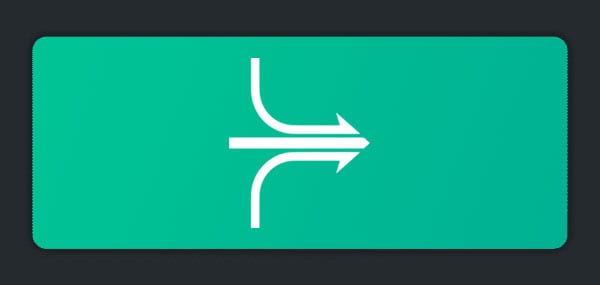No matter what type of digital transformation your company is undergoing, there is one thing all digital transformations have in common: they’re producing massive amounts of events. Events are the lifeblood of leading enterprises, and while most companies embarking on digital transformation initiatives have plans for data management, data storage, and data analytics, few have a strategy for data movement. Yet how data will move through the increasingly distributed enterprise is one of the most critical decisions for any successful digital transformation initiative.
If events are the lifeblood of leading enterprises, event-driven architecture is the circulatory system.
An event is a change of state or occurrence that can be recognized, transmitted, processed, and reacted to by other applications.
Historically, most distributed computing systems have interacted via request/reply where one system asks another for information or instructions. Event-driven architecture distributes information in real-time based on changes in state or things that happen. It’s a flexible architecture that decouples systems, and it’s the most reliable, durable way to scale microservices-based applications and business processes across your enterprise.
Whether you’re a telecom receiving events about signal strength to optimize the location of the next cell tower, or a manufacturer running a quality assurance application firing assembly line readings to local SCADA systems and HQ for analysis — the number of events you’re going to be dealing with is going to rise during your digital transformation.
How you move events can dramatically impact the reliability, scalability and performance of your applications. Event-driven architecture can be an ideal solution for these challenges.
How to Implement Event-Driven Architecture – the Early Challenges
As with the implementation of any new technology, there are adjustments and compromises to be made when deploying event-driven architecture. Here are a few things that you’ll want to consider before getting started:
- How do you make events easily accessible?
- What are your organization’s data governance practices? How will you expose data to new services while maintaining security? How will that information be retrieved, and what API will you use to get that data to the system that gets it everywhere it needs to be.
- How do you provide resilient and robust performance and scale?
- Does your infrastructure span multiple sites? How do you maintain reliability and uptime across the system? At what point do you add additional nodes and how do you do that, whether it’s in the cloud or on-premises?
- How do you secure and govern that event distribution?
- Data governance programs don’t always account for events. Since this is a new type of streamable data, traditional models focused on data at rest may not be applicable.
- How do you achieve uniform connectivity?
- How can you ensure that producers and consumers can all connect to the system so they can exchange data? Also, how do you connect all of these seemingly disparate events that are generated across your organization?
- How do you make it dynamic and low touch?
- How can you pull all events in from around your organization in a way that everything can read what’s being streamed? What code are you able to modularize and reuse or repurpose?
It’s understandable that many organizations get overwhelmed at this stage of their digital transformation. The implementation process can be made easier by thinking ahead and by incorporating the right technologies at the start.
The Solution: Start with an Event Mesh
Many of the above questions can be addressed by incorporating an event mesh and event portal.
An event mesh is an architectural layer that dynamically routes events from one application or connected device to any other— no matter where they are deployed. Whether it’s in legacy on-premises systems or in the public cloud, private cloud, or somewhere in between, an event mesh takes the guesswork out of getting events where they need to be.
An event mesh is essentially an interconnected network of event brokers – a modern form of message broker – that dynamically routes events across distributed and disparate computing environments. An effective event mesh is self-routing, self-healing, and self-learning, and will become more efficient as more events are routed through it. You’ll want to build your event mesh with an event broker that utilizes open protocols and supports open APIs so you can avoid vendor lock-in.
Building the Agile Business Through Successful Digital Transformation
It’s important that the event broker is easy to deploy, operate, manage, and scale so you can focus on the flow of events that drive your business instead of managing the system that enables that flow.
With event-driven architecture and an event mesh, you can swiftly build and deploy event-driven applications that foster successful digital transformation by letting your business collect, use, and respond to the real-time event data that’s generated across your organization.
To learn more about why event-driven architecture is key to your successful digital transformation, and how an event mesh can solve some of the challenges to deployment, check out this video:

Explore other posts from categories: Business | For Architects

 Mychelle Mollot
Mychelle Mollot











